Blue Hens host blue tech conference
David Lawson runs a company that grows seaweed in New Zealand.
The product is dried, crushed up and fed to cows to prevent them from belching out methane gas, a key cause of climate change.
“It’s right at the intersection of climate change and aquaculture,” Lawson said of his business.
His company, CH4 Global, will soon also have a research and development facility near the intersection of College Drive and Pilottown Road on the University of Delaware’s College of Earth, Ocean, and Environment at the Hugh R. Sharp Campus.
Lawson, a native of Scotland, retired to Lewes five years ago. He saw an opportunity in his adopted hometown.
“You’ve got ocean water access, the lab set up, the infrastructure. The big thing we have here is students and researchers that would be interested in reducing carbon dioxide,” Lawson said.
He said he hopes to have the R&D facility up and running in the fall, which could lead to a handful of jobs.
It is just the kind of partnership UD is looking facilitate in its Blue Economy Tech Center.
Lawson was among those who attended the university’s annual Blue Tech conference at the Lewes campus March 6-7.
The gathering was a networking opportunity for private companies, government agencies like the National Weather Service and researchers to see firsthand UD’s cutting-edge research.
It is part of UD’s goal to make Delaware a leading national center in the application and development of autonomous systems in support of advancing the blue economy.
The blue economy is defined as sustainable use of ocean resources for economic growth. Offshore wind, fisheries and tourism are all components of the blue economy.
One of UD’s ongoing efforts is Project ABLE, which stands for Align, Build, Leverage and Expand. It is a public-private partnership funded by the National Oceanic and Atmospheric Administration.
“We recognize we need greater and a more diverse workforce in the blue economy and the blue tech sector,” said Art Trembanis, a UD oceanography professor. “We need to inspire youth to meet the challenges and opportunities in the blue economy.”
One example is job training for careers in the offshore wind industry.
The U.S. Department of Labor gave just more than $1 million to set up the pilot program, which is a collaboration among UD, Delaware Technical Community College and the private sector.
The first training class was held at UD in October.
UD estimates there will be a need for 500 trainees per year by 2030, as the offshore wind industry ramps up in Delaware and Maryland.
One of the cool parts of the Blue Tech conference was the tour of UD’s robotics laboratory.
Mechanical engineering professor Bert Tanner showed off a platform that uses six flippers to navigate through the water.
“It’s one of the few platforms we have that can overcome surf conditions, go really fast through the waves,” Tanner said.
Part of the lab is a garage filled with aquatic and aerial drones and exotic vehicles.
One of the vehicles is the amphibious Quad Ski, which is a jet ski with wheels, capable of running on land and in the ocean.
There is also the Vision 60, a robot dog made by a company in Philadelphia. It can climb stairs, walk over rough terrain and generally go where people can’t. It also barks.
Researchers said the “dog” can be used for real-world missions like search and rescue, disaster environment and border inspection.
All of the “toys” are serious high-tech platforms used for marine research.
UD student Rebecca Walsh showed off an ocean glider they affectionately call Mary. It just returned from a test mission off the coast, gliding through the water from New Jersey to Virginia.
The glider is used during hurricane season to send back data to forecasters at the National Weather Service.
But, Mary may soon have competition, as UD researchers are now developing an electronic tag they can attach to sharks.
“Rather than us having to deploy a glider, recover a glider [and] do all the maintenance, we can just pop the [tag] on a shark and let it do its thing,” Walsh said.
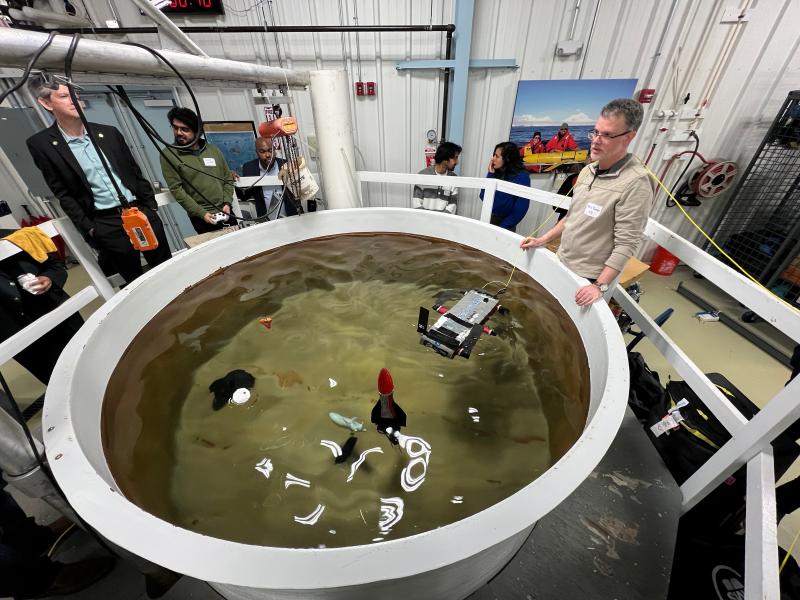
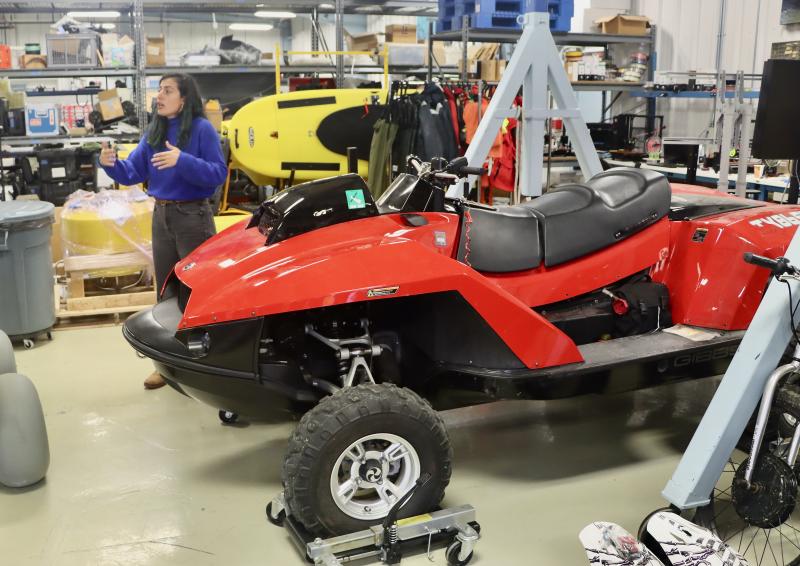
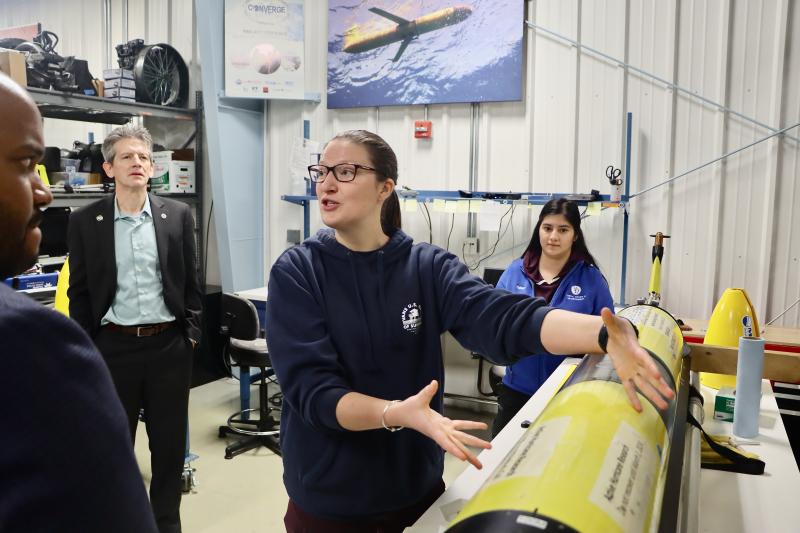
Bill Shull has been covering Lewes for the Cape Gazette since 2023. He comes to the world of print journalism after 40 years in TV news. Bill has worked in his hometown of Philadelphia, as well as Atlanta and Washington, D.C. He came to Lewes in 2014 to help launch WRDE-TV. Bill served as WRDE’s news director for more than eight years, working in Lewes and Milton. He is a 1986 graduate of Penn State University. Bill is an avid aviation and wildlife photographer, and a big Penn State football, Eagles, Phillies and PGA Tour golf fan. Bill, his wife Jill and their rescue cat, Lucky, live in Rehoboth Beach.














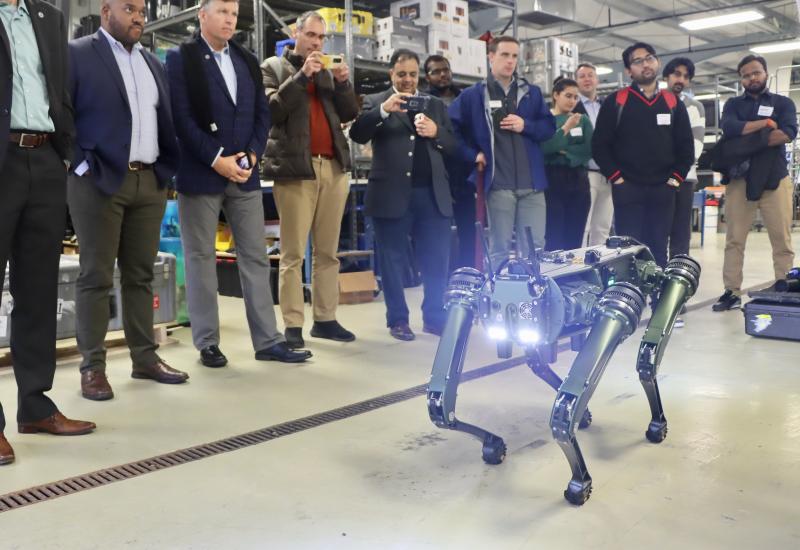
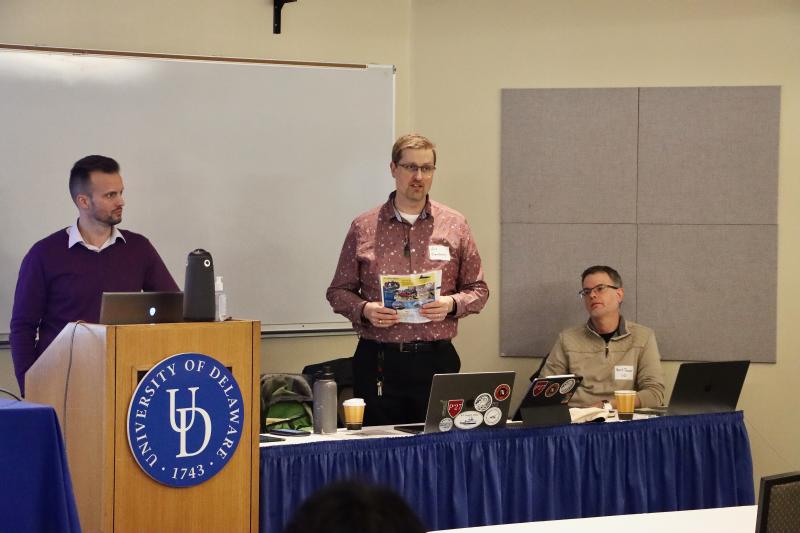
.jpeg)









































